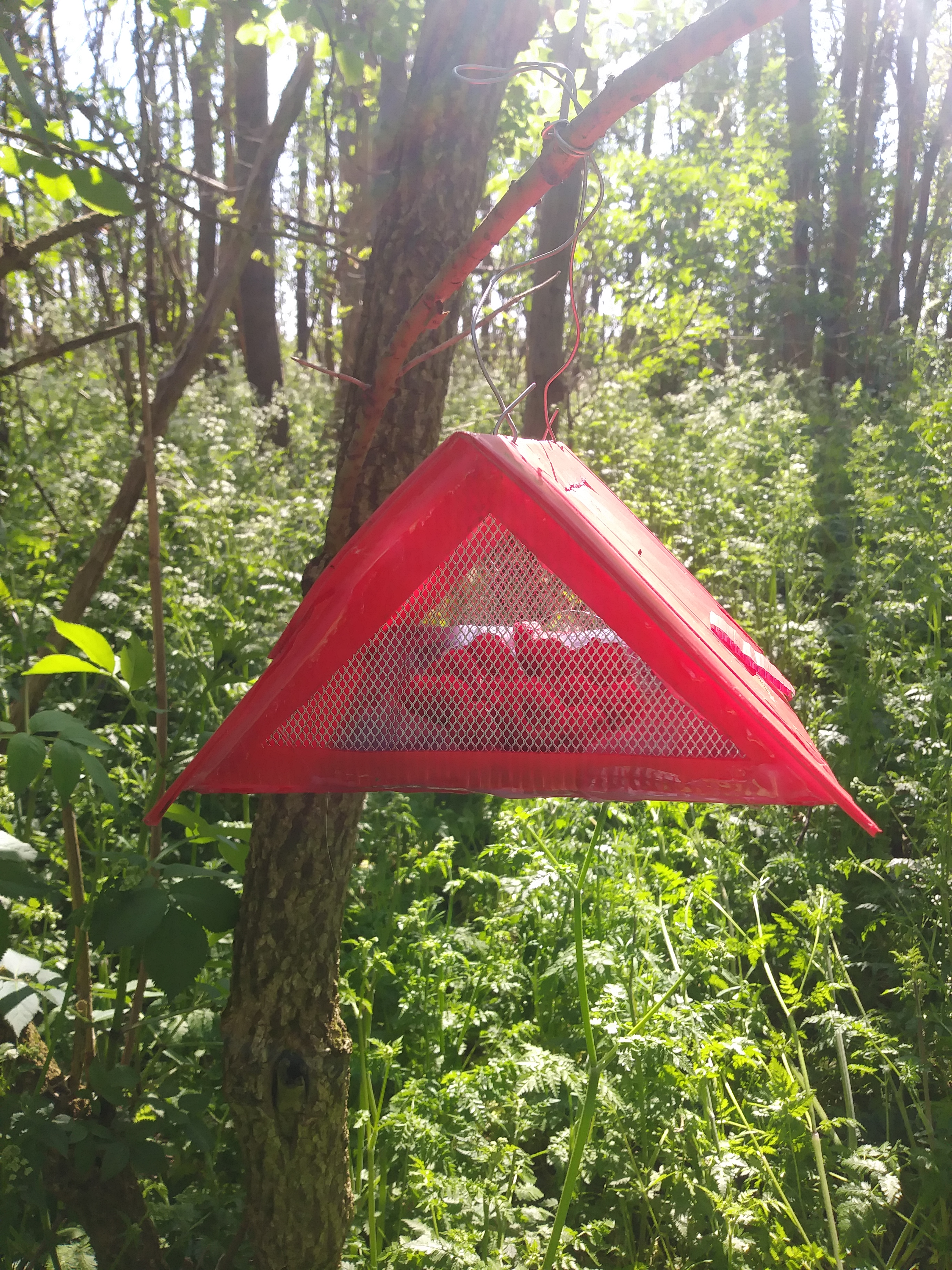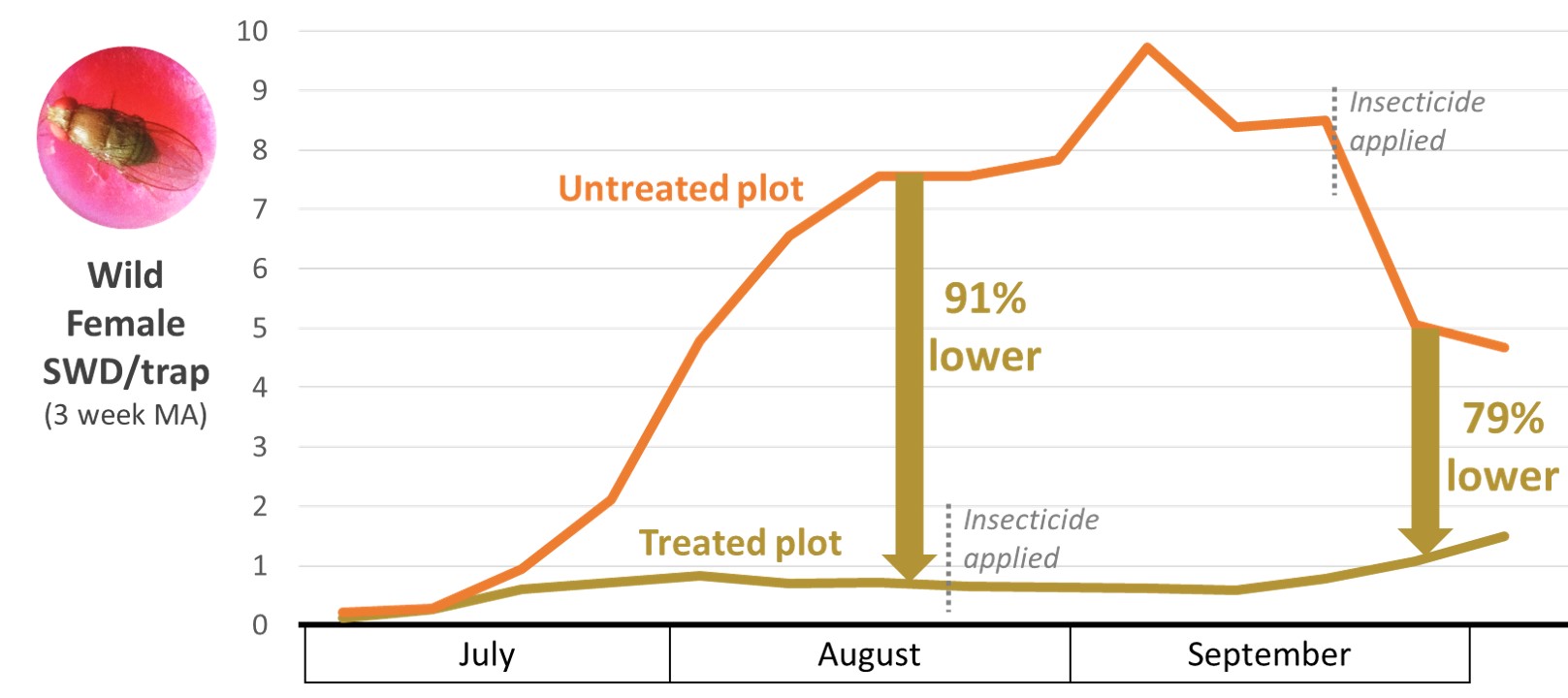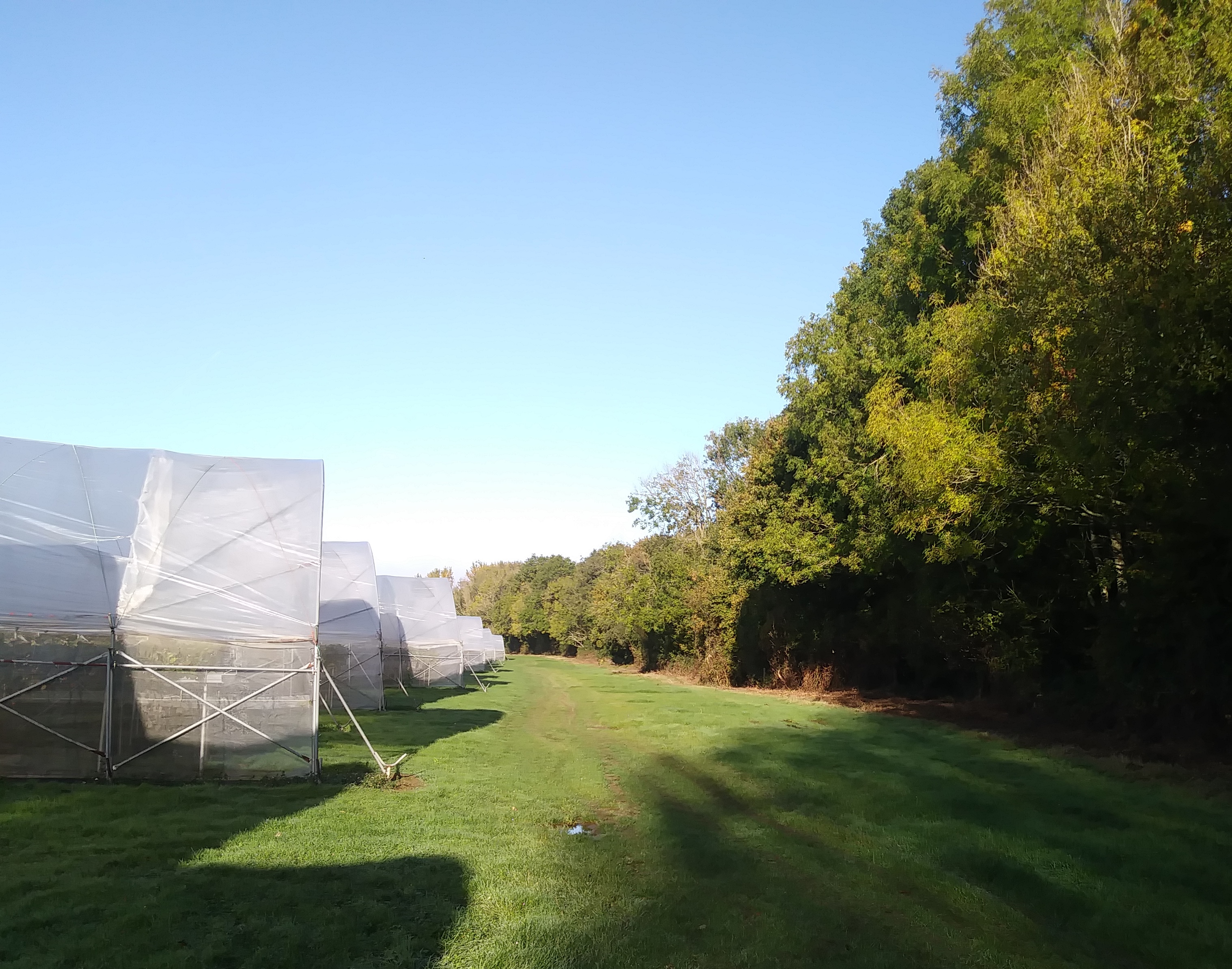- About
-
Research
- Agronomy and farming systems
-
Agricultural crop research
-
Research projects - agriculture
- About SASSA-SAI
- BioBoost
- Biomass Connect
- CTP for Sustainable Agricultural Innovation
- Climate Ready Beans - workshop presentations (March 2022)
- Crop diversity HPC cluster
- Designing Future Wheat
- Final project workshop
- Get involved
- List of materials
- News and updates
- Partners
- Rustwatch
- The Sentinel Crop Disease Surveillance Network
- The research team
- UK Cereal Pathogen Virulence Survey
- UK wheat varieties pedigree
- Weed management - IWM Praise
- Crop breeding
- Crop characterisation
- Data sciences
- Genetics and pre-breeding
- Plant biotechnology
- Plant pathology and entomology
- Resources
-
Research projects - agriculture
-
Horticultural crop research
-
Research projects - horticulture
- Augmented Berry Vision
- BEESPOKE
- Boosting brassica nutrition in smart growing systems
- CTP for Fruit Crop Research
- Develop user-friendly nutrient demand models
- Egg laying deterrents for spotted wing drosophila
- Enhancing the nutritional quality of tomatoes
- Improving berry harvest forecasts and productivity
- Improving vineyard soil health through groundcover management
- Intelligent growing systems
- Knowledge transfer for sustainable water use
- POME: Precision Orchard Management for Environment
- RASCAL
- STOP-SPOT
- UV-Robot
- Crop science and production systems
- Genetics, genomics and breeding
- Pest and pathogen ecology
- Field vegetables and salad crops
- Plum Demonstration Centre
- The WET Centre
- Viticulture and Oenology
-
Research projects - horticulture
- Crop Science Centre
- Research Projects
-
Services
- Analytical Services
- Business Development
- Commercial trial services
- Membership
- Plant breeding
- Plant characterisation
- Seed certification
-
Training
-
Technical agronomy training
- Advanced crop management of bulb onions
- Advanced crop management of vegetable brassicas
- Advanced nutrient management for combinable crops
- Benefits of cover crops in arable systems
- Best practice agronomy for cereals and oilseed rape
- Developing a Successful Strategy for Spring Crops
- Disease Management and Control in Cereal Crops
- Incorporating SFI options into your rotation
- Protected Environment Horticulture – Best Practice
- Techniques for better pest management in combinable crops
- Crop inspector and seed certification
- Licensed seed sampling
-
Technical agronomy training
- News & Views
- Events
-
Knowledge Hub
- Alternative and break crops
-
Crop genetics
- POSTER: Diversity enriched wheat (2025)
- POSTER: Genetics of wheat flag leaf size (2024)
- POSTER: Wheat yield stability (2024)
- Poster: Traits for future cereal crops (2022)
- POSTER: wild wheat fragment lines (2022)
- POSTER: Improving phenotyping in crop research (2022)
- PRESENTATION: Plant breeding for regen ag
- Poster: Designing Future Wheat (2020)
- Crop nutrition
-
Crop protection
- POSTER: Understanding the hierarchy of black-grass control (2025)
- POSTER: Emerging weed threats (2025)
- POSTER: Disease control in barley (2025)
- Poster: Weed seed predation in regen-ag (2024)
- POSTER: Disease control in winter wheat (2025)
- POSTER: Mode of action (2023)
- POSTER: Inter-row cultivation for black-grass control (2022)
- POSTER: UKCPVS winter wheat yellow rust in spring 2025 (2025)
- Poster: Management of Italian ryegrass (2021)
- POSTER: UKCPVS winter wheat rusts - 2024/25 review (2025)
- POSTER: UKCPVS disease monitoring and the benefit to UK growers (2025)
- POSTER: Diagnosing and scoring crop disease using AI (2025)
- POSTER: Finding new sources of Septoria resistance (2024)
- POSTER: Fungicide resistance research (2024)
- POSTER: Detecting air-borne pathogens (2024)
- POSTER: Oilseed rape diseases (2024)
- POSTER: Fungicide resistance research (2024)
- POSTER: Improving chocolate spot resistance (2022)
- Poster: Pathogen diagnostics (2022)
- Fruit
- Regen-ag & sustainability
-
Seed certification
- POSTER: Wheat DUS (2024)
- POSTER: Innovation in variety testing (2024)
- POSTER: AI and molecular markers for soft fruit (2024)
- POSTER: Barley crop identification (2023)
- POSTER: Herbage grass crop identification (2023)
- POSTER: Herbage legume crop identification (2024)
- POSTER: Minor cereal crop inspecting (2023)
- POSTER: Pulse crop identification (2023)
- POSTER: Wheat crop identification (2023)
-
Soils and farming systems
- POSTER: Checking soil health - across space and time (2024)
- POSTER: Checking soil health - step by step (2024)
- POSTERS: Changing soil management practices (2022)
- Poster: Monitoring natural enemies & pollinators (2021)
- POSTER: Soil structure and organic matter (2024)
- POSTER: Novel wheat genotypes for regen-ag (2024)
- Video: New Farming Systems project (2021)
- Video: Saxmundham Experimental Site (2021)
- POSTER: Impact of prolonged rainfall on soil structure (2024)
- POSTER: Soil & agronomic monitoring study (2024)
- POSTER: The impact of rotations & cultivations (2024)
- VIDEO: Great Soils; soil sampling guidelines (2020)
- Poster: Soil invertebrates within arable rotations (2024)
- VIDEO: Soil health assessment (2021)
- POSTER: Saxmundham - modern P management learnings
- POSTER: Saxmundham - 125 years of phosphorus management
- Poster: Soil phosphorus - availability, uptake and management (2025)
- POSTER: Morley long term experiments (2025)
- POSTER: Exploiting novel wheat genotypes for regen-ag (2025)
- Video: Saxmundham Experimental Site (2021)
- Varieties
Continued progress in SWD management

Dr Michelle Fountain, Head of Pest and Pathogen Ecology, and Scott Raffle, Senior Knowledge Exchange Manager reflect NIAB’s progress in managing spotted wing drosophila in the UK fruit industry.
It is 12 years since spotted wing drosophila (SWD) was first recorded in the UK at NIAB’s East Malling site in Kent, but the work to manage and control this invasive pest had already begun before its arrival. Scientists and technical managers had mapped its movement from its origins in Japan to the USA, then mainland Europe. By 2011, the UK fruit industry had formed an SWD Working Group to consider how to manage it when it gained entry here.
Since 2012, NIAB entomologists have led the lion’s share of UK funded research into the pest, but why was it so important to the industry to learn how to manage and control it?
SWD (Drosophila suzukii) is a fruit fly, but unlike the common fruit fly found in the UK (Drosophila melanogaster) which is only attracted to overripe fruits, SWD is attracted to fruit of all ages. Females have a saw-like ovipositor which makes an incision in the surface of developing soft skinned fruits.
Eggs are laid under the surface of the skin and hatch into larvae, which not only contaminate harvested fruits, but feed on the flesh, causing the fruit to collapse, rendering it unmarketable. Cherries, blueberries, strawberries, raspberries and blackberries are particularly susceptible to damage. If left uncontrolled, 100% crop loss can occur in cherry and over 50% in other susceptible crops.
Research progress
AHDB spent more than £1.6 million over ten years, funding research projects with NIAB and other collaborators, with additional funds provided by Defra, British Summer Fruits, Innovate UK and The Worshipful company of Fruiterers. Here, we summarise NIAB’s research that has aided industry in the fight against SWD.
The first AHDB project focused on four key areas of research including:
- Monitoring
- Habitats and pest dynamics
- Crop management and hygiene
- Control.
Fig 2. Biobest Drosotrap typically used by many growers to monitor for the presence of adults.
The project tested different traps and monitoring devices and a range of attractant lures which helped growers to choose practical monitoring options for their own farms. Work was also carried out to help growers identify the presence of larvae in developing fruits using flotation methods.
We learned a huge amount about how, and where, SWD adults live and overwinter and when they start to migrate into soft and stone fruit plantations. This has helped growers to know when, and where, to monitor for SWD adults and larvae.
We recognised how vital it is to remove old, damaged and diseased fruits from plantations and then investigated how to dispose of waste fruit through fermentation and incorporating this fermented waste into field soils.
Finally, we experimented with agrochemical control agents to assess their relative ability to control SWD adults in UK conditions. NIAB identified that synthetic pyrethroid products work well, but these are incompatible with IPDM programmes used for other pest and disease problems. The spinosyn product Tracer is extremely effective as are the cyantraniliprole products Exirel and Benevia.
The grower guidance arising from this project was summarised in the AHDB Factsheet Management and control of spotted wing drosophila. Further AHDB-funded projects have allowed NIAB to investigate three particularly exciting new control approaches including the reduction of over-wintering populations, the use of a ‘push-pull’ technique and the use of bait sprays for control during the season.
Fig 3. Flotation testing for larvae in fruit
In research at NIAB’s East Malling site, where grids of precision monitoring traps were deployed in native woodlands adjacent to soft fruit crops, fewer SWD adults emerged from the woodlands in spring. Preliminary data is also showing that the traps nearest the crop on the woodland edge captured the most SWD, enabling growers to make better decisions about trap placement. Although numbers of SWD increased in the crop later in the year, a reduced population of the pest emerging in spring will help growers to manage the pest more effectively early in the season.
The aim of the push-pull management approach was to combine the use of repellents and attractants, so that the pest could be pushed away from the crop using a repellent and attracted into a trap containing a fatal component. Work done by a Collaborative Training Partnership for Fruit Crop Research (CTP-FCR) PhD student at NIAB (with the Natural Resources Institute at Greenwich), identified three compounds that repelled SWD and in experimental polytunnels, two of these significantly reduced egg laying at distances over six metres.

However, these results could not be reproduced when tested in commercial cherry and raspberry crops, so further work is required.
The NIAB bait spray research, in collaboration with Microbiotech, has been highly successful in strawberry, raspberry and cherry. Molasses and a commercially available adjuvant Combi-Protec are both extremely attractive to SWD adults. When added to Benevia on strawberry or Tracer and Exirel on raspberry and cherry and sprayed to a reduced area of the crop canopy, they attracted SWD adults to feed on the sprayed leaves, allowing them to ingest the control chemical causing death.
When using most adjuvants, plant protection products must not exceed 50% of the normal recommended rate. We experimented with 50% of the recommended rate and lower, and when applied as a band of large droplets, achieved comparable control to full rate sprays.
The bait spray work has identified an effective alternative to using full foliar applications of the full rate of product by applying to a reduced area of crop canopy. This offers the chance to reduce the risk of chemical residues, whilst also decreasing the total cost of application, both in terms of the quantity of product used and the time taken to apply the spray to a small area of the crop canopy. This strategy also helps to protect other biocontrol agents released into or entering the crop.
Fig 4. Precision monitoring Sentinel Fruit Trap in woodland
The molasses bait has now been commercially developed by Russell IPM into a food bait adjuvant called Probandz, for use as a band spray with ‘on-label’ or EAMU authorisations using no more than 50% of the approved rate. It should be noted that Combi-Protec is already authorised for use in the UK as an adjuvant (applied with 50% rate of product) but only in combination with products with standard ‘on-label’ or EAMU authorisations and not emergency authorisations. The manufacturers of Tracer, Exirel and Benevia have not yet funded their own work on bait sprays, so do not currently support this method of application.
Additional research
The Worshipful Company of Fruiterers has funded two additional projects at NIAB looking at novel integrated approaches to control. The first, in partnership with Berry Gardens Growers involved entomologists at NIAB identifying parasitoids emerging from SWD larvae and pupae. Five native species were identified, but unfortunately the pupal parasitoid Trichopria drosophilae was not among them. This latter species is commercially available in mainland Europe for use in biological control, but as it has not yet been identified in the UK, it cannot be released in UK crops.
A further study funded by The Worshipful Company of Fruiterers at NIAB involved the use of biotremology, the study of mechanical vibrations and their effect on organism behaviour.
Fig 5. Precision monitoring crop-woodland adajcent to soft fruit crop
Some insects such as the European tarnished plant bug are known to use vibration signalling at species-specific frequencies during courtship. It was thought that by creating vibrations through the crop canopy, we could disrupt mating and reproduction of SWD. A method for applying biotremology to the crop was developed in the laboratory and this worked successfully through the tabletop strawberry truss support tapes in the field, but neither SWD feeding or egg laying was deterred. Further work needs funding to investigate the vibration emission method and its transmission through the crop.
In addition, a recent NIAB-led BBSRC-IPA project, in collaboration with researchers at the Natural Resources Institute and Berry Gardens Growers, demonstrated that the presence of Drosophila melanogaster (the common fruit fly) larvae in laboratory media, deter SWD from laying eggs. If the compound that deters SWD could be identified, it could be deployed in future integrated pest management strategies to control SWD.
An exciting new development
 One light at the end of the tunnel giving growers hope is the Sterile Insect Technique (SIT) being developed by BigSis in collaboration with NIAB and funded by Innovate UK and Berry Gardens Growers. Sterile males are introduced regularly to the crop to mate with wild female SWD, which fail to produce any offspring.
One light at the end of the tunnel giving growers hope is the Sterile Insect Technique (SIT) being developed by BigSis in collaboration with NIAB and funded by Innovate UK and Berry Gardens Growers. Sterile males are introduced regularly to the crop to mate with wild female SWD, which fail to produce any offspring.
Fig 6: Trial showing how the SIT techniques maintain low populations of SWD compared to the use of crop protection sprays
Early trials on strawberry in open polytunnels have shown encouraging results with SWD levels remaining very low throughout the season compared to plantations treated with agrochemical products, where populations show peaks and troughs due to the latter mostly being effective only on the adult flies. More detail can be found at https://pubmed.ncbi.nlm.nih.gov/35447770/. This research has continued through the 2022 season, and BigSis plans to offer this technique as a commercial service to fruit growers, starting in 2023.
Recent scientific papers
NIAB staff have published several papers on SWD recently, including:
This article is adapted from one written for the Autumn 2022 edition of NIAB’s Landmark magazine. You can sign up for free and get Landmark delivered to your door or inbox four times a year:






